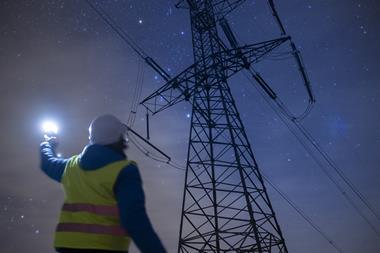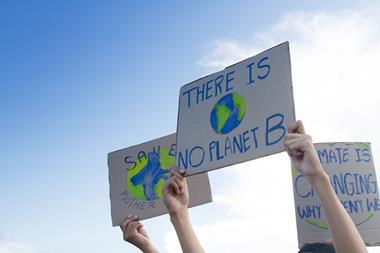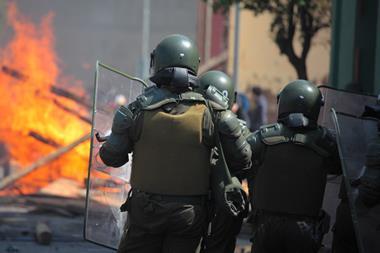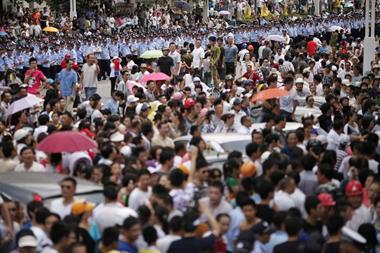As Europe heads into a ‘Winter of Discontent’, how can risk managers plan for the worst, and coldest, of the energy crisis?
The War in Ukraine, spiralling inflation and ongoing energy crisis is expected to reach its peak across Europe this winter, with the prospect of blackouts. So are we entering another Winter of Discontent, and how ready are we?
At the time of writing, the UK’s National Grid had issued and subsequently cancelled an alert for power cuts in Scotland, warning that the high-demand hours around 7pm could lead to a ‘tight electricity margin’. Contingency plans were set into action and the alert was withdrawn, but it is a taste of potentially more difficult times ahead.
Preparing for the worst case
With Russian gas now accounting for less than 10% of the EU’s gas supply, nuclear outages in France and droughts across hydroelectric dams in Norway, Europe is in the midst of an energy crisis.
The European Commission is preparing for worst case scenarios, according to EU crisis management commissioner Janez Lenarčič. He told Germany’s RND media network it was likely EU countries would need disaster relief as a result of the energy crisis.
European governments have already taken concerted action to make up shortfalls in energy as a result of the loss of Russian gas suppliers. This includes investing heavily in LNG infrastructure in order to source the fuel from the US and other, more friendly, markets.
There have been accelerated discussions around the development of renewable energy as part of the wider transition to zero carbon economies.
But infrastructure for alternative sources takes time to construct and is not a quick fix for this winter’s energy crisis.
As reported by Reuters in October, dozens of ships carrying LNG were circling off the coast of Spain unable to secure slots to unload. This is because plants which convert LNG back into gas are already operating at maximum capacity, resulting in a growing backlog.
It is understood the National Grid is debating whether to put thermal coal power stations on standby as one fallback solution and it is becoming increasingly clear the environment could lose out over the short term.
Load shedding ahead
The first scenario under consideration is that “one or a small number of member states” will be affected “by a minor incident such as a blackout, in which case other EU countries could offer support and deliver power generators ’as happens during natural disasters’”.
The starker scenario is that a large number of countries could be impacted, calling for support from the EU’s strategic reserve.
Germany’s civil protection agency and the UK’s National Grid have both warned to expect short-term blackouts over the course of the winter.
UK homes and businesses could lose power for up to three hours at a time if gas supplies run extremely low, according to the National Grid. It would do this enacting legislation which has not been used since the 1970s. While an ‘unlikely’ scenario, supply interruptions are a possibility if the energy crisis escalates, it warned.
Meanwhile, UK government officials from the Department for Digital, Culture, Media and Sport are understood to have met with data centre operators to discuss how to keep them running in the case of rolling blackouts, centred around allocating diesel for backup generators. The government has reportedly war-gamed emergency measures to cope with seven-day power cuts, according to the Guardian.
But speaking during a conference in October, Fatih Birol, chief executive of the International Energy Agency (IEA) said he thought the Continent should get through the winter unscathed, bar any major surprises.
Should Europe experience an “extremely cold and long winter” or further attacks to its energy infrastructure, it could put energy capacity under significant pressure. It comes after an attack on the Nord Stream 2 pipeline in September (see box).
Severe winter weather could exacerbate the situation, playing further havoc with operations, cutting off heat, power, deliveries and communication, resulting in unplanned disruptions and both financial and reputational damage.
It is vital to have a well thought out business continuity plan to prepare for the worst, and to consider a wide range of scenarios.
Dusting off contingency plans
Awareness in advance of the potential for disruption should help companies prepare from a business continuity perspective, according to Werner Collenberg, head of Risk Engineering Services Energy, Swiss Re Corporate Solutions.
“Business should be able to prepare for blackouts this winter because they know they may be coming. At least at this stage, companies are able to test their back-up equipment and dust off their contingency plans.”
Normally companies mitigate the risk of a power outage by sourcing from more than one power supplier. But in the scenario of a government imposing deliberate load shedding on the grid, such a contingency would become irrelevant, points out Collenberg.
Meanwhile, emerging backup generators are not designed to maintain normal production capacity and hence manufacturers - for instance - may want to consider whether they can shift part of their production to a sister plant.
“Companies have to decide how much back-up power they want to install and how much they need to keep their businesses going. Emergency generators are normally used to shut down the processes in a safe way - they’re not built to maintain production.”
“It’s all about contingency planning and scenario planning to get the full view of the possibilities which can go wrong,” adds Collenberg. “It’s a unique situation in the sense that we are expecting blackouts, and at the same time there is a supply chain issue in the world.
”So it’s not only about having the generator in place, but also the spare parts because the lead time has increased tremendously. As a result, it is going to be more expensive to maintain back-up generators.”
The human element
Then there is staff wellbeing to consider at a time when the cost of living is increasing, fuelled by double digit growth in inflation. If only workplaces are targeted for power cuts, then some staff may be able to work from home.
However, employees are also likely to struggle through a blackout, unable to buy food, heat their homes or fuel their vehicles, adding to the sense of chaos and disruption that could occur.
As became apparent during the pandemic, cyber criminals are quick to exploit people’s confusion during a crisis and this is another aspect risk managers must prepare for as they scenario plan for the winter.
As we saw with NotPetya, cyber attacks against critical infrastructure can be another source of unplanned blackouts. The series of powerful ransomware attack in 2017 was perpetrated against the Ukraine power grid by (what is widely believed to be) Russian state actors, resulting in outages for roughly 230,000 consumers.
Social unrest is another potential consequence. “One question we get asked a lot is about the secondary consequences of the energy crisis,” says Cvete Koneska, head of Advisory at Dragonfly. “In general we’ll see more protests on the streets and more social unrest. We could also see more government instability as a result of blackouts and I’m certain a lot of businesses and risk managers are considering this and planning how to manage it.”
Unlike the COVID-crisis, Europe’s energy shortages are unlikely to be felt in the same way from one country to the next, with potential implications for the region’s cohesiveness.
“This is yet another crisis that requires sharing and taking action together - obviously this crisis is much more political in nature,” says Koneska. “Equally some members states in Europe are more predisposed to suffering from this crisis compared to others.”
“The extent of the fallout will depend a lot on whether we are looking at a particularly cold winter, in which case the demand is going to be so much higher than if we have a mild winter,” she continues.
“We need to model that and plan for energy shortages, whether that affects businesses or individuals. Hopefully we can get through this winter and ensure we are better prepared for future winters.”




















No comments yet